Rock Garden Ideas on a Slope: Transform Your Hilly Yard
Creating a rock garden on a slope can transform a challenging landscape into a beautiful and low-maintenance area. Rock gardens are an excellent solution for sloped terrains, making use of rocks and plants that thrive in such environments. This setup not only helps with soil erosion but also brings a unique aesthetic to your yard.

If you enjoy spending time outdoors and want to make the most of your sloping garden, rock gardens can offer a practical and visually pleasing option. With the right planning, your sloped rock garden can become a stunning focal point in your landscape, providing both function and beauty.
1) Tiered Rock Walls

Tiered rock walls can transform a steep slope into a beautiful, layered garden. By building multiple levels, you create flat surfaces to plant flowers, shrubs, or even small trees.
Use large rocks to form the base of each tier, ensuring they are stable. Smaller rocks can fill the gaps and add a decorative touch. Each tier can have its own plants, creating a rich, textured look.
Make sure to place the largest rocks at the bottom for support. This method helps prevent soil erosion and makes your garden easier to maintain. For more ideas, check out these landscaping ideas.
2) Riprap Boulder Creek
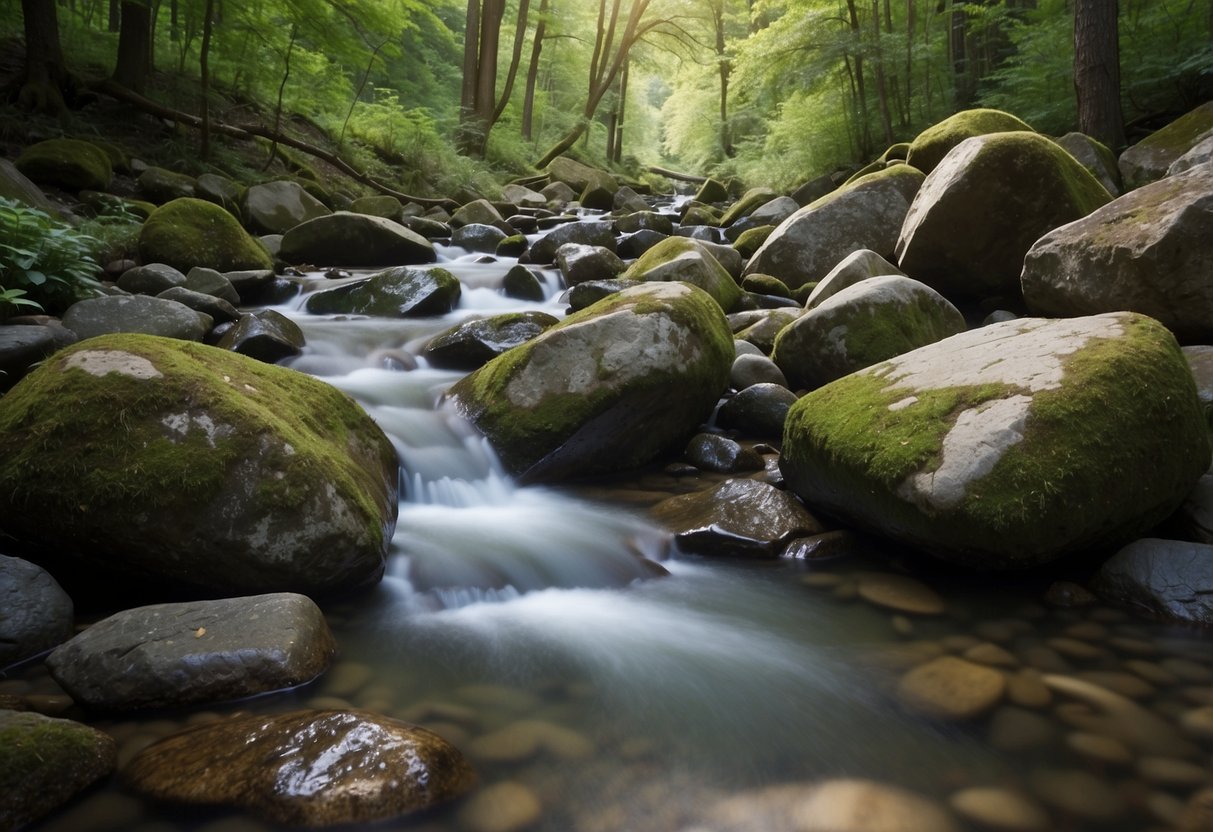
Riprap is a great way to manage erosion and add beauty to your sloped garden. Large boulders placed strategically can create a natural creek-like appearance.
A mix of small and large rocks will help you achieve a balanced look. Also, it provides a stable structure for plants and soil.
For ideas on how to arrange these rocks, check out this guide on installing riprap.
3) Succulent Rock Outcrops

Create a stunning focal point by incorporating succulent rock outcrops in your garden.
Stack flat rocks to add height and visual interest among low-growing succulents.
Choose varieties with different shapes, sizes, and colors for a vibrant display.
Ensure the soil drains well to prevent water from pooling around the roots of your succulents.
For more ideas, check out these beautiful succulent rock garden concepts.
4) Perennial Flower Pockets
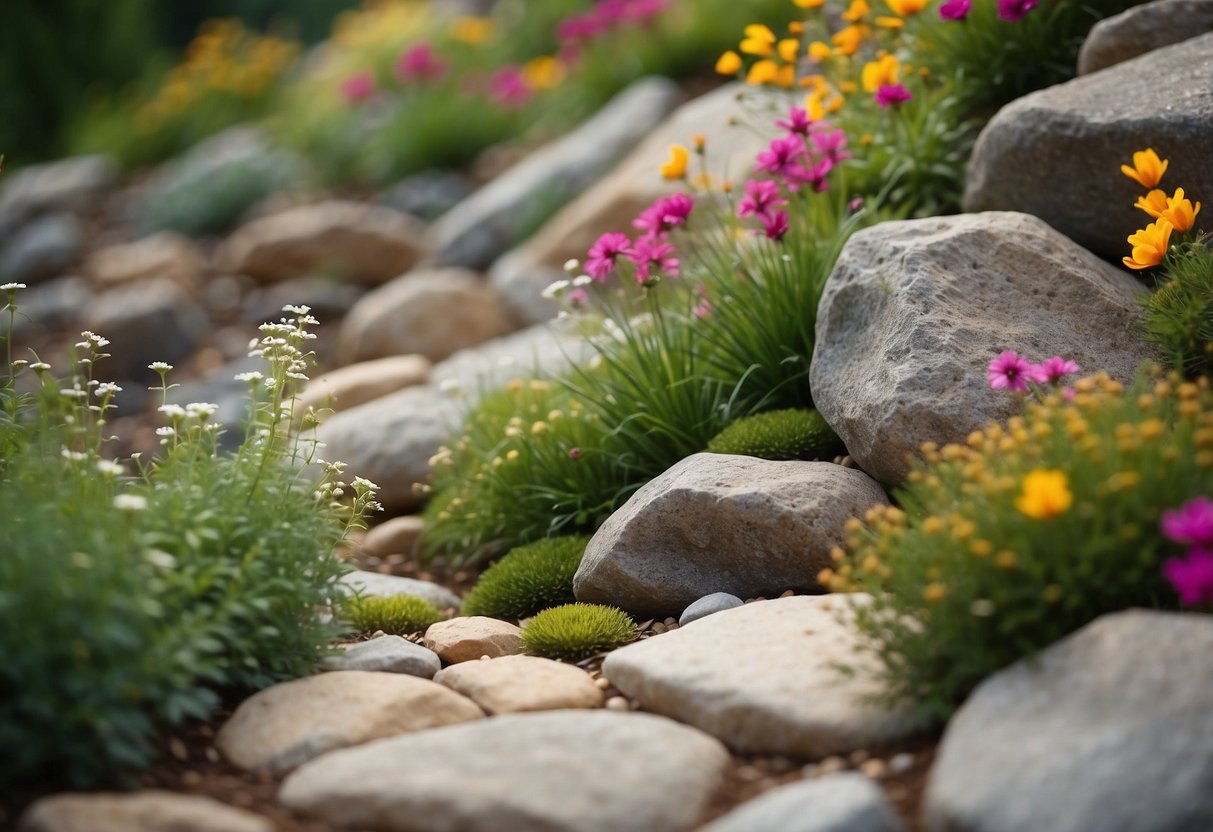
Planting perennials in small clusters between rocks creates charming flower pockets. These pockets can make bare slopes vibrant. Choose hardy perennials that thrive in rocky soil.
Consider plants like Garden Phlox and Dalmatian Bellflower. They are beautiful and need little maintenance. Grouping them together helps them stand out against the rocks, creating a colorful and stunning visual effect.
With the right plants, your rock garden will be a little slice of paradise.
5) Rock Garden Pathways

Creating pathways in your rock garden helps you navigate the slope easily. Use flat stones or pavers for a smooth, stable surface.
Ensure the path is wide enough for walking, and consider adding low-maintenance plants along the edges. This will give a natural look and blend the path with the rest of your garden.
Add some creeping groundcovers to soften the edges. You can also place larger rocks alongside the path to prevent soil erosion and add visual interest. Make sure the pathways are well-drained to avoid water pooling.
6) Wooden Steps with Pebbles
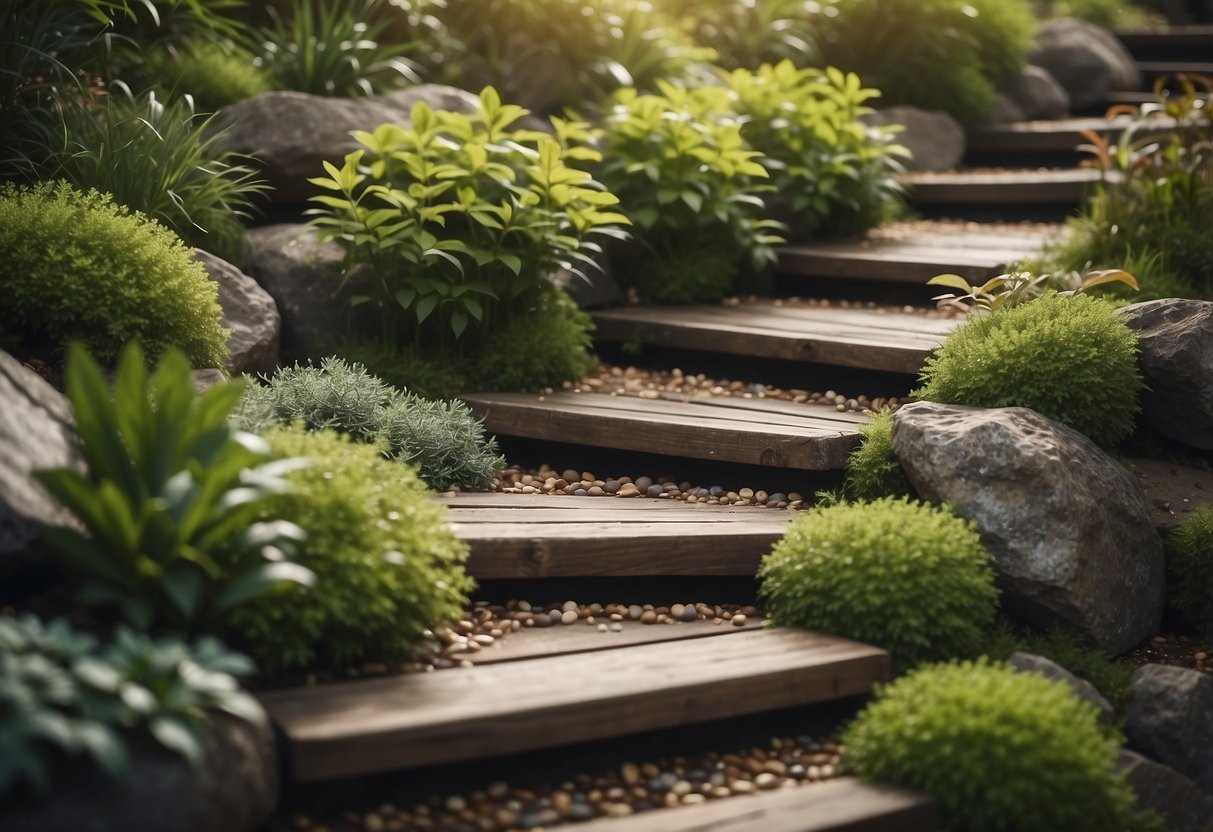
Wooden steps can add a warm and natural look to your rock garden. When combined with pebbles, they create a textured and appealing path.
Start by laying the wooden steps on the slope, making sure each one is stable.
Fill the spaces between the steps with small pebbles. This helps with drainage and adds a decorative touch.
Use pebbles in contrasting colors to highlight the wooden steps. This combination brings a natural and modern feel to your garden.
7) Zen Garden Corner

Creating a Zen garden corner on a slope can be serene and beautiful. Begin by placing a few flat stones or small floating decks to provide a stable surface for meditation.
Add small shrubs or grasses to soften the look. Incorporate a stone pagoda lantern and a trickling fountain to bring peaceful sounds and visual interest.
8) Alpine Plant Beds

Alpine plant beds are fantastic for adding color and variety to your rock garden on a slope.
Plants like Dianthus, Creeping Phlox, and Rock Cress are perfect choices. These plants are hardy and low maintenance.
Alpines grow well in rocky, well-drained soil, making them ideal for slopes. They also provide a natural and vibrant look.
Consider adding ornamental grasses like Blue Fescue. Their blue-tinted foliage can add a striking contrast.
Using a mix of these plants, you can create a beautiful and low-maintenance Alpine garden.
9) Limestone Steps

Limestone steps can add a natural charm to your rock garden on a slope. They are sturdy and durable, providing a solid pathway.
Using limestone helps control erosion and blends beautifully with the surrounding landscape. Installing these steps yourself can save money.
For a detailed guide on building these steps, check out how to build stone steps on a slope.
10) Rocking Water Feature

Adding a water feature to your rock garden can make it peaceful and beautiful. You can create a small waterfall or a stream that flows over rocks.
Make sure to position the rocks carefully so the water flows smoothly without splashing.
For a touch of green, plant some ferns or moss around the water feature. This will give your garden a natural look and feel.
A rocking water feature can attract birds and other wildlife, turning your garden into a lively and calming space.
Understanding Rock Garden Basics
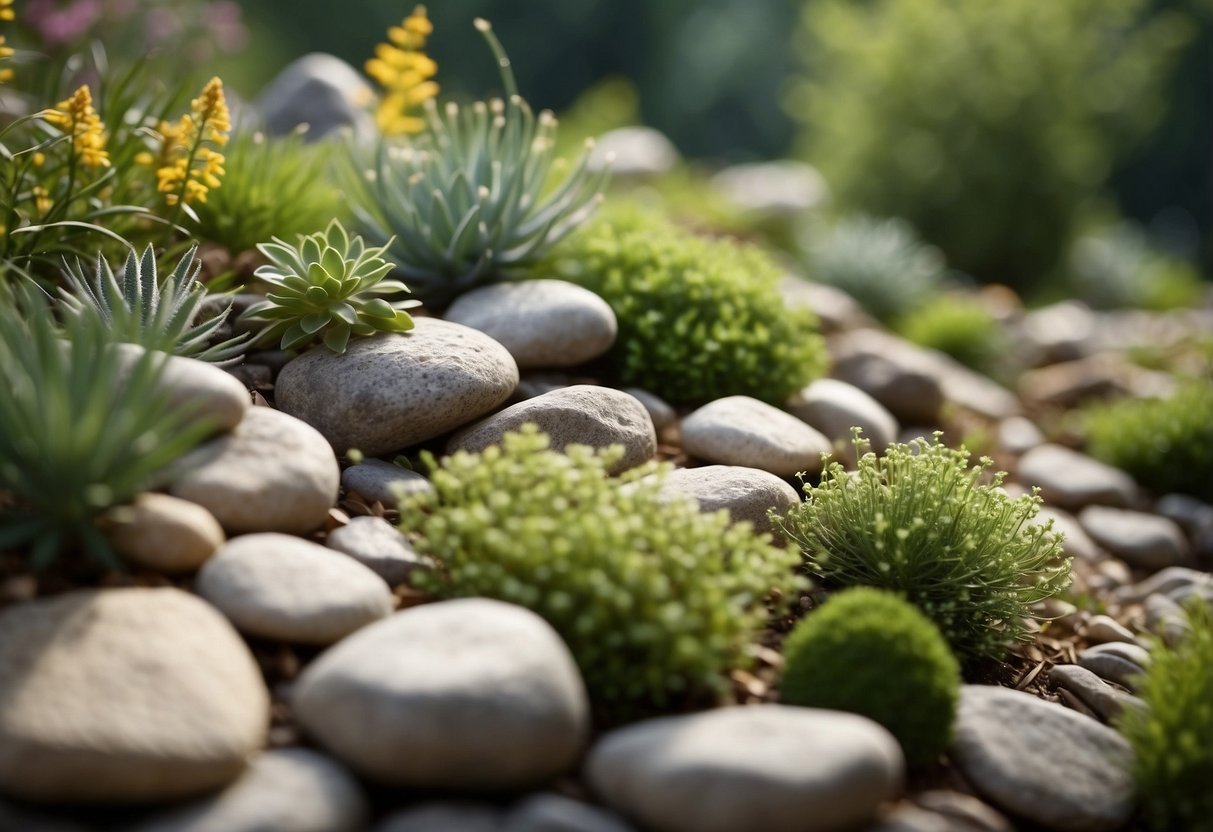
Rock gardens on slopes are not only visually appealing but also practical for managing water flow and preventing soil erosion. With the right tools and materials, you can create a stunning and low-maintenance garden.
Benefits of a Rock Garden on a Slope
A rock garden on a slope helps manage water runoff which reduces the risk of soil erosion. This kind of garden uses large rocks to hold soil in place, creating terraced planting areas. These terraces make the garden more stable and easier to plant in.
Besides being practical, rock gardens are beautiful. Rocks of various sizes and colors create an interesting landscape. The plants used in rock gardens, such as ice plants and creeping thymes, are often low maintenance. This means less watering and weeding for you.
Additionally, rock gardens can attract wildlife. Birds, butterflies, and beneficial insects are drawn to the diverse plants and cool, shaded areas provided by the rocks.
Essential Tools and Materials
Building a rock garden requires several tools and materials. Here’s a list to get you started:
- Shovels and Spades: Essential for digging and moving soil.
- Wheelbarrow: Helps transport rocks and soil.
- Gloves: Protect your hands while working with rocks and plants.
- Large Rocks: These form the structure of your garden. Use them to create terraces and prevent soil erosion.
- Small Rocks or Gravel: Fill gaps between larger rocks and aid in drainage.
- Plants: Choose low-maintenance plants like rock cress, fescues, and saxifraga that thrive in rocky conditions.
Each tool and material plays a role in the construction and maintenance of your rock garden. Proper planning and the right supplies make the project easier and more enjoyable.
Designing Your Rock Garden

Creating a rock garden on a slope involves carefully selecting the rocks, incorporating appropriate plants, and ensuring efficient water drainage. Each element plays a crucial role in achieving a visually appealing and functional garden.
Choosing the Right Rocks
The rocks you choose set the foundation for your garden. Opt for large boulders for stability on steep slopes. These bigger rocks help prevent soil erosion and provide a strong base.
For a more natural look, bury one-third to one-half of each rock into the ground. This creates a seamless blend with the landscape.
Smaller rocks, such as pebbles and gravel, can be used to fill gaps and provide a textural contrast. Using a mix of different sizes adds visual interest and depth.
Incorporating Plants
Selecting the right plants is essential. Focus on perennials, ornamental grasses, and small shrubs to complement the scale of the rocks. These plants add vertical height and texture.
Creeping groundcovers, like thymes and saxifraga, soften the hard edges of the rocks and help to hold the soil in place. Choose plants that can thrive in your local climate and require minimal maintenance.
Adding bulbs such as narcissus and alliums can introduce seasonal color and contrast, making the garden more vibrant throughout the year.
Creating Natural Water Drainage
Proper drainage is key to maintaining your rock garden, especially on a slope. Start by ensuring that the soil has good drainage properties.
Consider installing a dry creek bed using pebbles or small rocks to guide water flow. This prevents water from pooling around your plants and rocks, which can cause erosion and plant damage.
Incorporate sloped surfaces in your design to naturally direct water away. This ensures water moves efficiently and reduces the risk of soil washout. Good drainage helps maintain the integrity of both your plants and rocks, leading to a healthier and more sustainable garden.
By combining these elements, you can create a beautiful and functional rock garden that enhances the natural beauty of your slope.
Maintenance Tips
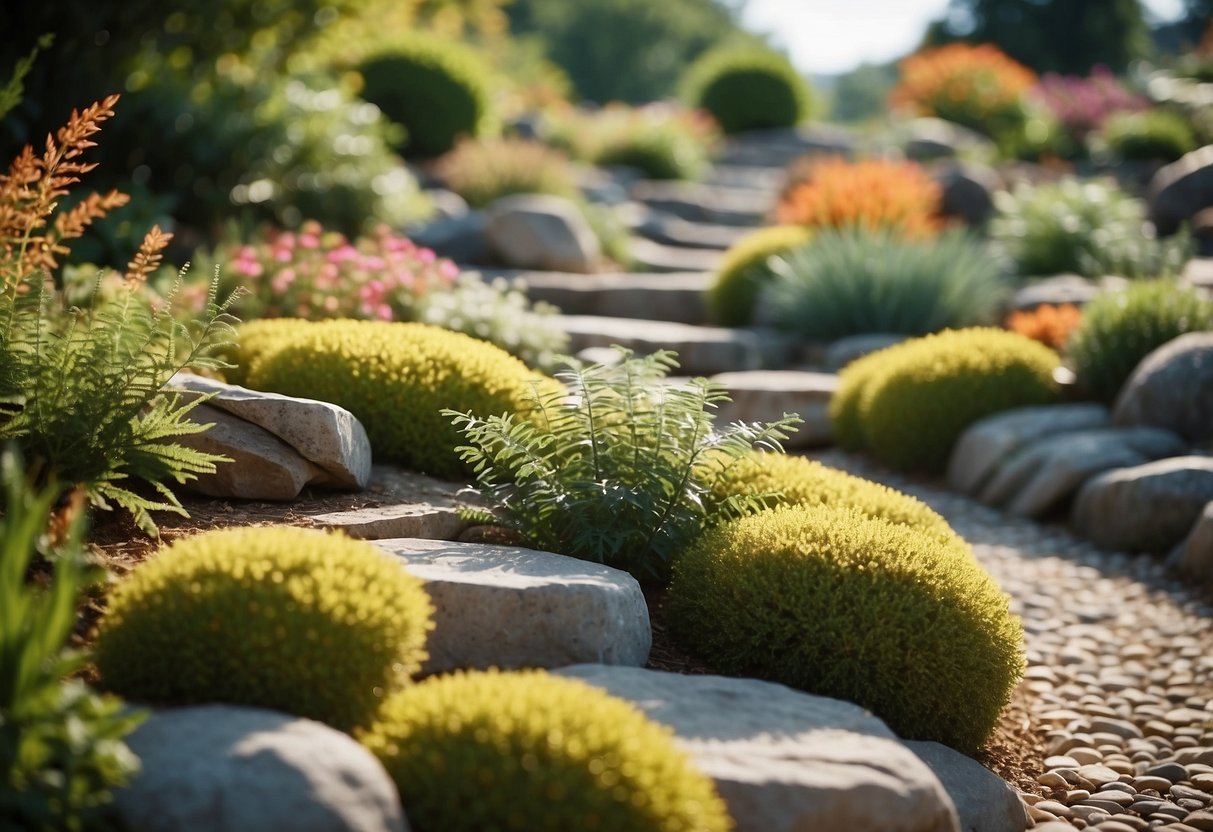
Maintaining a rock garden on a slope can be simple if you follow a few key strategies. Weed control and seasonal care are crucial to keeping your garden looking its best.
Weed Control Strategies
Weeds can quickly take over a rock garden if not managed. Start by laying a thick layer of mulch between the stones. This helps stop seeds from reaching the soil. Choose a mulch that complements your rock color and the garden’s natural look.
Hand-weeding is another effective method. Pull weeds from the roots to prevent them from regrowing. This may seem time-consuming, but it maintains the appearance of your garden.
Consider using a pre-emergent herbicide in early spring. It prevents weed seeds from germinating. Be cautious and choose a herbicide that won’t harm your plants.
For more persistent weeds, use vinegar-based sprays. These natural solutions are safe for the environment and won’t harm your plants. Apply them directly on weeds, avoiding desirable plants.
Seasonal Care
Seasonal care involves tasks specific to different times of the year. During spring, check for plant growth and add new plants. This is the ideal time to introduce bulbs like narcissus or tulips.
In summer, ensure proper irrigation. Although rock gardens are low-maintenance, plants need water during dry spells. Use a soaker hose to direct water to the roots without causing erosion.
Autumn is the time to clear fallen leaves that can smother plants. Rake gently around rocks to avoid disturbing them.
Winter requires preparing your plants for the cold. Cover sensitive plants with burlap or garden fabric. This protects them from frost and wind. Dressing up exposed soil with compost or mulch also helps insulate the roots.







